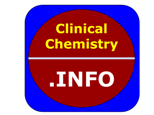Clin Chem Lab Med. 2025 Aug 12. doi: 10.1515/cclm-2025-0353. Online ahead of print.
ABSTRACT
OBJECTIVES: Measurement of ionized calcium is frequently used in the assessment of calcium metabolism. However, the utility of ionized calcium in young children can pose a challenge. In this study, we aimed at establishing novel accurate reference ranges for ionized calcium in plasma in a pediatric population.
METHODS: All children aged 0-3 years who had ionized calcium measured in Region Zealand from 2012 to 2023 were included. Exclusion criteria included samples from intensive care units or nephrology departments and samples with pH under 7.2 or over 7.6. If a patient had repeated samples, only the last measurement per month for each child was used. In total, 20,516 ionized calcium measurements from 16,039 children were included. Based on these measurements, we established both pH corrected and non-corrected data sets.
RESULTS: Data are described as median with 2.5th and 97.5th fractiles. Reference ranges were divided into age groups. We observed variation in reference ranges, especially in the first 10 days of life: 1.14-1.46 (pH corrected 1.13-1.43) mmol/L on day zero rising to 1.29-1.59 (pH corrected 1.27-1.55) mmol/L on day eight. After reaching peak levels on day eight, ionized calcium gradually decreased to 1.16-1.36 (pH corrected 1.17-1.35) mmol/L at 18-24 months of age.
CONCLUSIONS: We present novel reference ranges for ionized calcium in plasma. Results indicate a physiological rise in plasma ionized calcium after birth. After eight days, a steady decrease in plasma levels was seen before stabilizing at 18-24 months of age.
PMID:40785088 | DOI:10.1515/cclm-2025-0353
